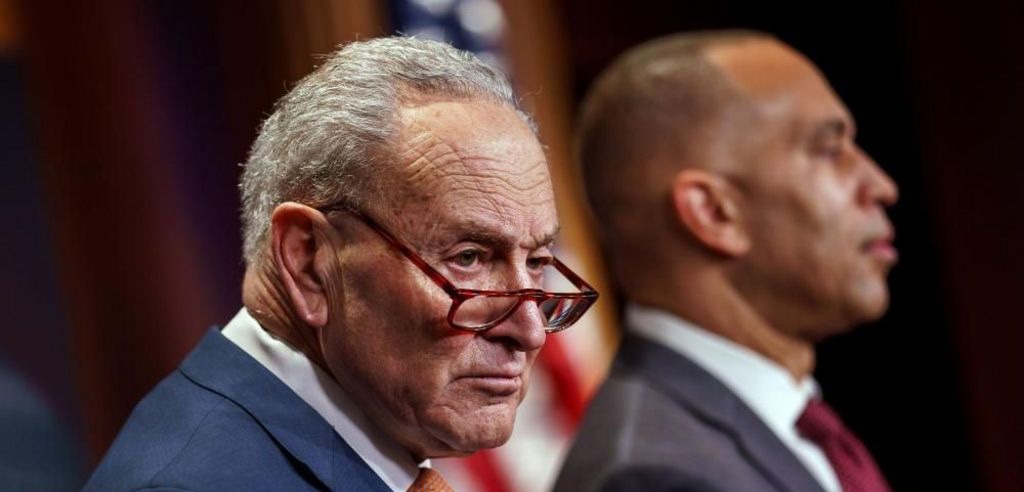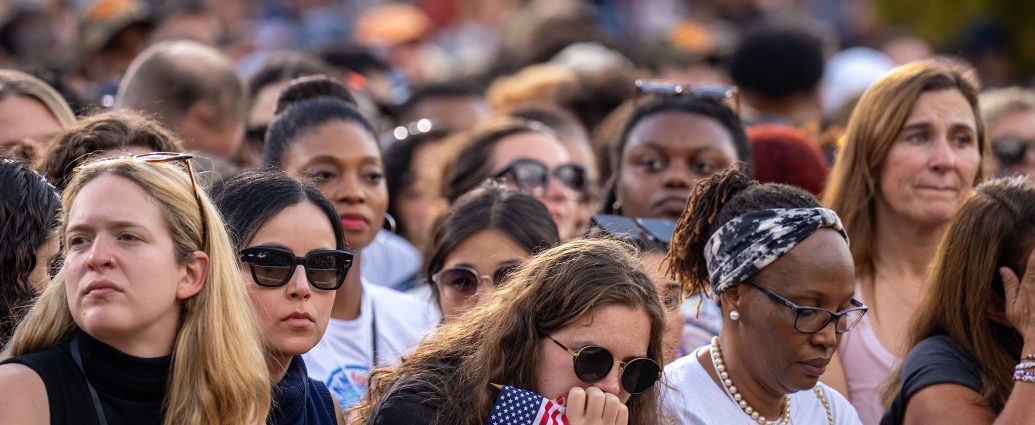by: John Clore | 3/17/2025 at 12:08 PM
Democrats in Disarray: Record-Low Favorability Amid Infighting and Leadership Void
The Democratic Party is facing unprecedented turmoil, as recent polls reveal a historic decline in favorability ratings, coupled with internal conflicts and a glaring absence of clear leadership.
Historic Low in Favorability Ratings
A CNN poll conducted by SSRS from March 6-9 indicates that the Democratic Party’s favorability among Americans has plummeted to 29%, the lowest since CNN began such polling in 1992. This marks a significant drop of 20 percentage points since January 2021.
This decline is partly attributed to dissatisfaction within the party itself. Currently, only 63% of Democrats and Democratic-leaning independents view their party favorably, a decrease from 81% at the onset of President Joe Biden’s administration. Both liberals and moderates have reported an 18-point drop in favorability since 2021.

Internal Strife and Leadership Challenges
The party’s internal discord is further highlighted by debates over strategy in dealing with the Republican agenda. A majority of Democrats and Democratic-leaning independents (57%) believe the party should focus on opposing Republican initiatives rather than seeking bipartisan cooperation. This is a notable shift from September 2017, when 74% favored working with Republicans to advance Democratic priorities.
The lack of a unifying leader exacerbates these challenges. When asked to identify a leader who best represents the party’s core values, responses were fragmented:
- 10% named New York Rep. Alexandria Ocasio-Cortez.
- 9% cited former Vice President Kamala Harris.
- 8% preferred Vermont Sen. Bernie Sanders.
- 6% mentioned House Minority Leader Hakeem Jeffries.
Notably, over 30% of respondents did not specify any leader, underscoring the party’s leadership vacuum.
-

DOGE Travel mug with a handle
$25.00 Add to cart -

Unique D.O.G.E. Ceramic Mug – 11oz & 15oz
$7.68 Select options This product has multiple variants. The options may be chosen on the product page -

Gulf of America Ceramic Mug – 11oz & 15oz
$7.68 Select options This product has multiple variants. The options may be chosen on the product page -

DEI
$15.50 – $24.00 Select options This product has multiple variants. The options may be chosen on the product page
Comparative Party Favorability
In contrast, the Republican Party currently holds a favorability rating of 36%. Among Republicans and Republican-leaning individuals, 79% view their party favorably. Political independents, however, express unfavorable views toward both parties, with only 19% viewing Democrats and 20% viewing Republicans favorably.
Perceptions of Extremism
Approximately half of the public perceives both major parties as holding views and policies that are too extreme. This perception marks a change from 2022, when 56% considered the Democratic Party’s positions to be mainstream. Among political independents, 57% view the Republican Party as too extreme, while 48% feel the same about the Democratic Party. Additionally, 16% of Democrats and 9% of Republicans believe their own parties are too extreme.
These findings highlight significant challenges for the Democratic Party as it navigates internal divisions, leadership uncertainties, and declining public support.
Featured Articles
DOGE on Michigan Wasteful Spending: LGBTQ, DEI, and Transgender Study Funds Could Fix the Roads Instead!
by: John Clore | 3/20/2025 at 9:11 AM LANSING, MI – After writing Shocking Waste: Federal Audit Uncovers Billions Wasted on Foreign Social Programs And seeing countless people on social media say, “We need DOGE in Michigan,” I decided to DOGE Michigan’s wasteful spending—here’s what I uncovered. Michigan’s state government
Sponsor
Investigative Reports
The Quiet Collapse Of Humans: How Feminism, Abortion, Poor Nutrition, and Big Pharma Are Fueling Global Depopulation
Engineered Extinction? The Global Push to End Reproduction Through Culture, Chemicals, and Control Over the past several decades, the world has witnessed a troubling trend—a steady and accelerating decline in childbirth rates. While many governments and media outlets frame this as a byproduct of modernity or personal choice, the reality


















